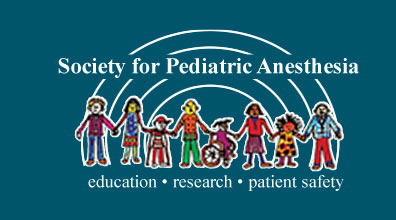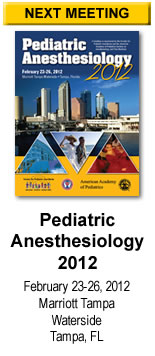The Pediatric Regional Anesthesia Network (PRAN) continues to grow at a rapid rate
By David Polaner, MD
This project, which was formed as a research network and highly audited case registry, is supported by SPA and by the contributions of the participating research centers. We seek to learn more about risks, complications and practice patterns in regional anesthetics in infants and children. There are now over 32,000 cases in the database.
Several new centers have joined the network and are submitting data. There are now 13 centers participating (see Table 1) and several others are in discussion with the steering committee about joining. Participating centers commit to entering data on every regional block performed by an anesthesiologist at their hospital and to auditing their data for completeness and accuracy. All data entry is done on line over a secure Internet connection to a centralized database.
One paper has been published and numerous abstracts have been presented in the last academic year at national and international meetings (see Table 2). The “reference” manuscript describing the detailed methodology of the network and the results of the initial cohort was submitted to Anesthesia and Analgesia, and is in review at this time.
We encourage any department interested in participating in this project to contact us- we hope to expand the network to enable us to develop the largest database of regional anesthetics in children in the world. Large numbers are necessary to get meaningful data about uncommon events. The PRAN database also enables your department to benchmark your institution against large national norms for quality improvement. Please contact David Polaner (david.polaner@childrenscolorado.org) and our project manager Christie Wolf (christiew@axioresearch.com) for more information.
Table 1: PRAN Participating centers as of November 2011
Seattle Children’s Hospital
Children’s Hospital Colorado (Denver Children’s)
Children’s Hospital at Dartmouth
Children's Memorial Hospital, Chicago
Lucile Packard Children's Hospital at Stanford University
Children's Medical Center, Dallas
Columbia University
The Cleveland Clinic
Children’s Hospital, Boston
Texas Children’s Hospital
University of Texas, Houston
University of New Mexico
Oregon Health Sciences University/ Doernbecher Children’s Hospital
Table 2: Recent Publications and abstracts
Polaner DM, Martin LD: Quality assurance and improvement: the Pediatric Regional Anesthesia Network. Pediatr Anesth DOI: 10.1111/j.1460-9592.2011.03708.x
Polaner DM, Taenzer A, Walker B, Boesenberg A, Krane E, Suresh S, Wolf C, Martin L: Pediatric Regional Anesthesia Network: a multi-institutional study of the use and incidence of complications of pediatric regional anesthesia. In review, Anesthesia and Analgesia 2011
Walker BJ, Bosenberg AT, Polaner DM, Krane E, Suresh S, Taenzer A, Lock C, Martin L and investigators of the Pediatric Regional Anesthesia Network: Neuraxial Blockade in Children: analysis of complications recorded over the first two years of the Pediatric Regional Anesthesia Network. Joint meeting of the Society for Pediatric Anesthesia and American Academy of Pediatrics Section on Anesthesiology and Pain Management, San Diego, CA, 2011Taenzer A, Bosenberg AT, Krane EJ, Martin L, Polaner DM, Suresh S, and the investigators of the Pediatric Regional Anesthesia Network: Asleep vs. sedated vs. awake: Regional anesthetic complications by patient state at the time of blockade: A report from the Pediatric Regional Anesthesia Network (PRAN). Joint meeting of the Society for Pediatric Anesthesia and American Academy of Pediatrics Section on Anesthesiology and Pain Management, San Diego, CA, 2011


